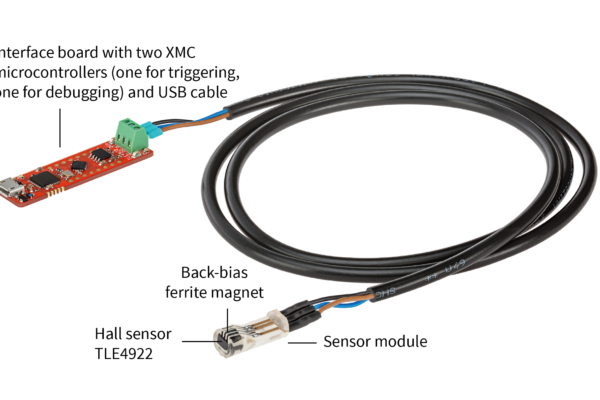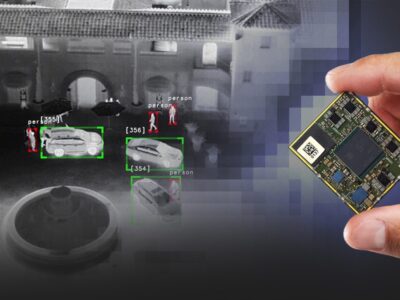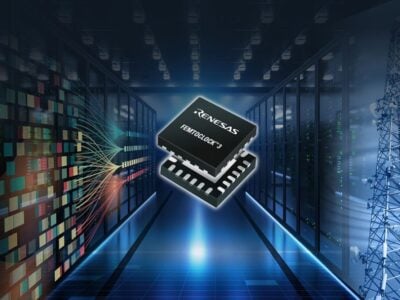
Hall-effect sensor plus development kit eases system development
The sensor measures the changes of the magnetic field very reliably. It can therefore be used for the detection of the movement in the most different types of wheels. These may be, for example, magnetic encoder wheels or ferromagnetic gear wheels. Moreover, the TLE4922 can help lowering the system costs: With this sensor, a simple, low-cost magnet can be used in a back-bias configuration without compromising the accuracy. The sensor is also very robust against vibration and air gap jumps, promises Infineon. It allows precise detection of the velocity over the very wide magnetic field range of ±400 mT. The large operating range simplifies electrical circuit design and makes it robust and flexible. This makes installing the sensor easier, which further reduces the system costs.
The TLE4922 is particularly suitable for a TIM (Twist Independent Mounting) configuration. Therefore it can replace passive VR (variable reluctance) sensors in the engine and on the wheels of two-wheelers and cars. Compared to the latter, the TLE4922 already allows an accurate speed measurement starting at 0 Hz. It also exhibits good jitter behavior and offers protection functions against short circuit, overtemperature and reverse voltage. Additional features include good electromagnetic compatibility (EMC) and ESD robustness for use in harsh environments. It operates with a supply voltage of 4.5 V to 18 V and in a wide temperature range from -40°C to 155°C. The sensor is available in a 4-pin SSO package.
With the Speed Sensor 2Go kit, the TLE4922 can be easily and quickly evaluated. Developers quickly see how the TLE4922 works in the application. Initial measurements are possible within a few minutes. The Speed Sensor 2Go kit includes a sensor module, an interface board and cable. The sensor module integrates a TLE4922 sensor and a back bias ferrite magnet. The interface board has two XMC microcontrollers – one for triggering and one for debugging. A USB cable is connected to the PC. A GUI-based evaluation tool records speed data and provides it graphically. In addition to the Speed Sensor 2Go kit, Infineon offers additional software-based development tools for simulating the sensor, such as System C models or special assessment tools.
More information: www.infineon.com/sensors
 If you enjoyed this article, you will like the following ones: don't miss them by subscribing to :
eeNews on Google News
If you enjoyed this article, you will like the following ones: don't miss them by subscribing to :
eeNews on Google News




